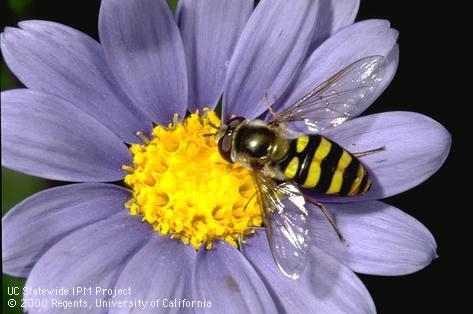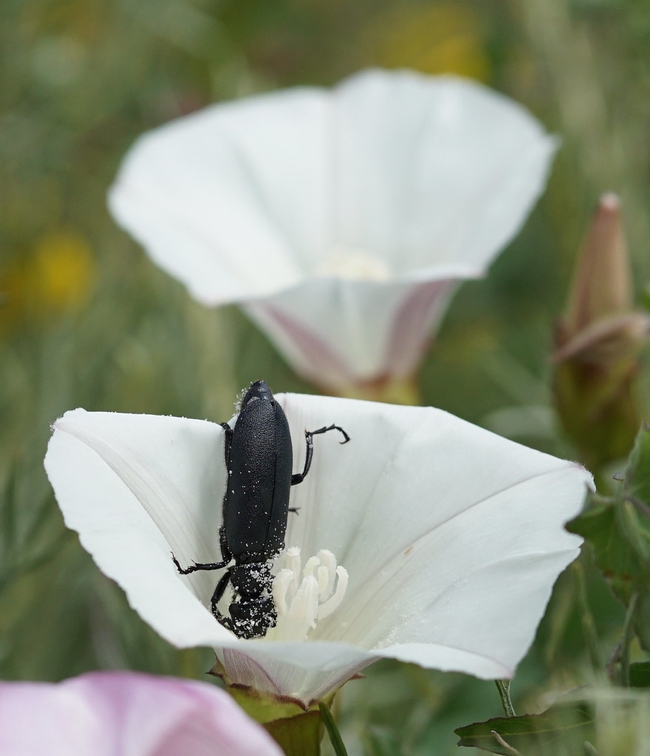There are around 350,000 pollinator species in the world. Though they are the most recognizable, bees are not the only plant pollinator team in town. Other insects that help to carry this responsibility are. butterflies, flies, moths and beetles. These, along with birds, bats and other small mammals and lizards, fill out the plant pollinator roster. Let's look at some of these often unrecognized helpmates.
Butterflies and moths
When thinking of gardens and pollinating butterflies often come to mind. Though butterflies are not built for pollination they do move the pollen as they flit from one nectar filled flower to another. They like brightly colored flowers that offer ‘landing platforms' with their clustering growth habit.
Moths do pollinate flowers but only those that flower at night. Hawk moths or Morgan's sphinx moths are adapted to pollinate certain types of orchids and the yucca plant depends on the yucca moth for its pollination needs. The flowers that night dwelling moths pollinate are usually dull colored.
Birds
For many people hummingbirds are the bird world's pollinator icon, but there are often other birds doing pollination duties without recognition. There are honeycreepers in Hawaii, honeyeaters in Australia, brush-tongued parrots in New Guinea and sunbirds in the tropical old world, just to name a few. Over 2,000 bird species feed on nectar. Flowers with curved out petals that provide a platform, are bright colored and have lots of nectar are the main focus of these feathered pollinators. In their search for nectar these birds will visit a flower and, in the process, become dusted with pollen. They will then move on to the next flower for more nectar and leave some of that precious pollen dusting their feathers behind to fertilize that new flower.
Flies:

Bee flies (Bombylius species) are another important fly pollinator. They are bee imitators in their look but actually feed on bee larvae. The bee flies have long sucking mouth parts specially suited to pollinate flowers with deep, narrow tubes. Other pollinating flies are adult mosquitos, some adult fruit flies and carrion flies that are attracted to flowers with a fetid odor.
Wasps
Wasps are different from bees because, for the most part, instead of gathering pollen they catch prey to feed their larvae. In their search on the flowers for their prey the flower's pollen tends to stick to the wasp's body and then they inadvertently pollinate the other flowers they visit while hunting. There is one species of wasps called ‘pollen wasps' because they gather pollen to feed their larvae and over 1,000 different species of figs that rely on the tiny fig wasp to pollinate them.
Beetles

Other less known pollinators
Believe it or not there are still more pollinators out there and some may surprise you. Mammals like monkeys, lemurs, possums, bats and rodents and even some lizards join the party as well.
Though these are not found in our area they are interesting nonetheless. The largest known pollinator is the black and white ruffed lemur (Varecia variegata) of Madagascar. This mammal feeds on the traveler's palm by pulling the tough flowers open and sticking their snout inside for the nectar. Their nose gets covered with pollen and when they visit the next flower and stick their nose in, viola, that flower gets pollinated.
The lizard, the Noronha skink (Trachylepis atlantica) from Brazil, crawls into the leguminous mulungu tree's flower and while drinking the tree's flower's nectar becomes covered in pollen. When visiting the next flower that pollen is transferred to this new flower pollinating it.
Final pollinator notes: It's a wild kingdom out there.
- We tend to think of pollination as mutually beneficial between plants and pollinators. Many pollinators use plant parts and substances to assist in their own reproduction While it's sometimes a two-way street, this is not always so..
- Mimicry and deceit often prevail.
- Some pollinators are specialists and some are generalists.
- Some bees collect the scents of flowers to use for their own purposes. “Bee perfume,” if you will.
- Diverse plants with colorful blooms attract pollinators to your garden and help to support a variety of birds, butterflies, moths, and beneficial insects year-round. These visitors play a critical role in sustaining our ecosystem by helping our plants reproduce.
- Important: Avoid using pesticides where possible because they are indiscriminate and will kill many wonderful pollinating insects along with the pests. Choose from UCANR IPM-Integrated Pest Management methods detailed at: http://ipm.ucanr.edu .
Napa Master Gardeners are available to answer garden questions by email: mastergardeners@countyofnapa.org. or phone at 707-253-4143. Volunteers will get back to you after they research answers to your questions.
Visit our website: napamg.ucanr.edu to find answers to all of your horticultural questions.
Information links: